Building Gender… So the Neighbors Will Understand
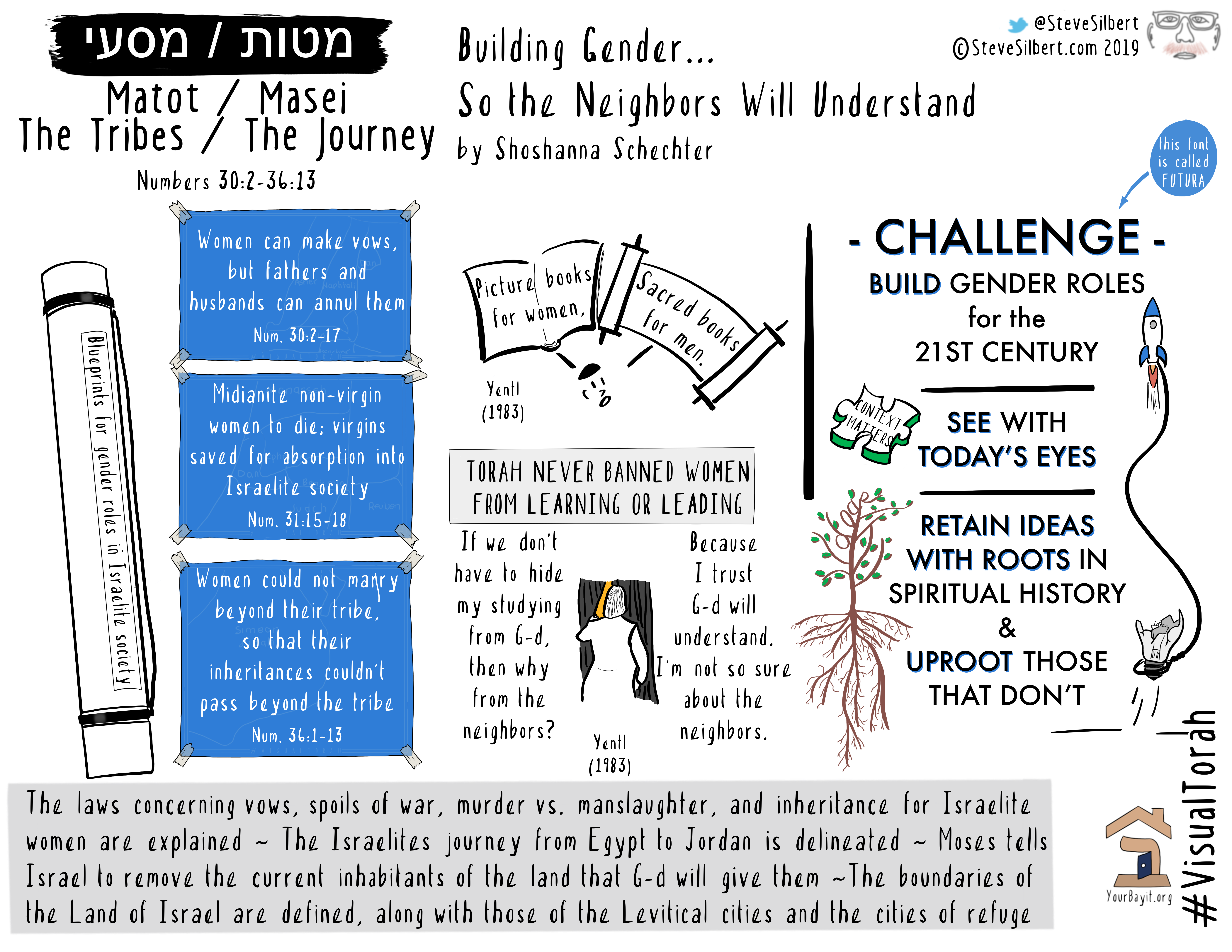
Part of a yearlong Torah series on spiritual building and builders in Jewish spiritual life.
We’re all in the “building” business, but often we don’t think about it. Even when we don’t try, we’re building our world and how we express key aspects of who we are in it.
Take gender. Gender is (and always has been) a cultural “construct.” Gender ideas, roles, identities and norms that we unthinkingly might experience as inherent to our lives and society around us are instead built. We receive gender constructions from the world around us, and we are not passive in this process. By our choices, we ourselves help build and perpetuate these gender constructions – or we tear them down and build new ones.
The double Torah portion of Matot-Masei is all about “constructs” – dividing land, building cities, relating between tribes, relating between enemy peoples and more. Torah’s text goes into great detail on these subjects, offering a “blueprint” for a future Israelite society in the Promised Land.
This same text also lays a “blueprint” for gender roles in the Israelite society of 3,500 years ago. It affirms women’s autonomy to make vows, but lets fathers (for unmarried women) and husbands (for married women) annul them (Num. 30:2-17). In war between Israelites and Midianites, the text de-values Midianite women who no longer were virgins and condemns them to die, while saving virgins for absorption into Israelite society (Num. 31:15-18).
And for the daughters of Tzelofchad – who previously spoke up for their right to inherit with such directness that God changed the law to redress their exclusion – now Torah made another change. On complaint from men in their tribe, Torah limited whom these heroic women could marry, so that women’s inheritances couldn’t pass beyond the tribe (Num. 36:1-13). That’s how the Book of Numbers ends.
Of course, it was no ending. Whether Torah was diminishing women – or, as many scholars believe, slowly improving the status of women in an ancient context that had little or no sense of gender equality – we’ve been wrestling these gender-constructing words ever since.
Some 3,500 years later, one result was Yentl – the 1983 Barbra Streisand movie adapting the 1975 Broadway play by Leah Napolin and Isaac Bashevis Singer, who first wrote the 1962 short story, “Yentl the Yeshiva Boy.”
In the opening scene, a bookseller enters the village of a young woman named Yentl passionate to learn. Trying to attract customers, the bookseller calls out, “Picture books for women, holy books for men!” When he catches Yentl reading a holy book (Sefer Yetzirah, a book of Jewish mysticism), the bookseller looks at her disapprovingly and tells her that she is in the wrong place. Not missing a beat, Yentl asks the bookseller to explain “why.” Annoyed, the bookseller quips dismissively, “Because it’s the law!”
Later at home, Yentl begs her scholarly father to study Talmud with her. The father agrees, then goes to close the window shutters – to hide the fact that he teaches his daughter. When Yentl questions him about this, her father answers, “God, I trust will understand. I’m not so sure about the neighbors.”
Gender constructions! Torah (“God,” for Yentl’s father) never banned women from learning or leading – but the “neighbors” were another matter. History took the tone of Matot-Masei, and its underlying societal notions of gender, and relegated women to “picture books.”
Gender constructions! A war in which the Israelites were to kill all Midianites, male and female, instead saved the “pure” (virginal) women and killed the others.
Gender constructions! The daughters of Tzelofchad – Machlah, Tirtzah, Chaglah, Milkah and Noah – weren’t inherently disqualified from inheriting but rather were treated that way by their society. The “law” purporting to state that “fact” wasn’t unchangeable: even the “law” we attribute to God could change.
All of these stories – and countless others in Jewish life – both reflect and respond to the deep truth that gender is built. We learn that we live in gender structures built by history, and we also learn that we participate in this ongoing building project whether we say so or not.
If we too are builders, we must actively build gender ways that serve now and serve the future.
That means using today’s eyes. Dubious academics aside, we don’t fully know how women were viewed during Torah’s time. We have pieces and clues, but they’re not all clear and none of us were there. Thus, while we know what the Torah text says, we don’t fully know what the text assumes us to know of its context. We think we know what was – but we don’t.
We can’t fully see yesterday – yet often we think we can. Torah, tradition, history, myth, legend and momentum all can seem so sure, so alluring and so powerful that they convince us that we know what was. If we happen to resonate with our (right or wrong) understandings of what was, then all the easier to honor and perpetuate them. If we don’t resonate with them, then all the easier to ditch them and devalue the Jewish context in which we believe they arose.
But there is a third way, and this third way is critical. The third way is to remember precisely that we don’t fully know what was. When we allow for this un-knowing about the whats and whys of gender constructions we received from history, our questions and critiques can stand alongside history. What’s more, they can become some of our most powerful tools for building the future.
So let’s remove all of those blind assumptions. Let’s drop ideas that don’t have truly clear foundations in spiritual history – that there are only two genders, that any gender should have diminished agency, that any role in spiritual life should be reserved or privileged for just one gender. And then let’s do the really hard work of uprooting those impure ideas from our world, our hearts, our communities – whatever the cost.
God, I trust, will understand. Now let’s work on explaining it to the neighbors.


By Shoshanna Schechter. Sketchnote by Steve Silbert.

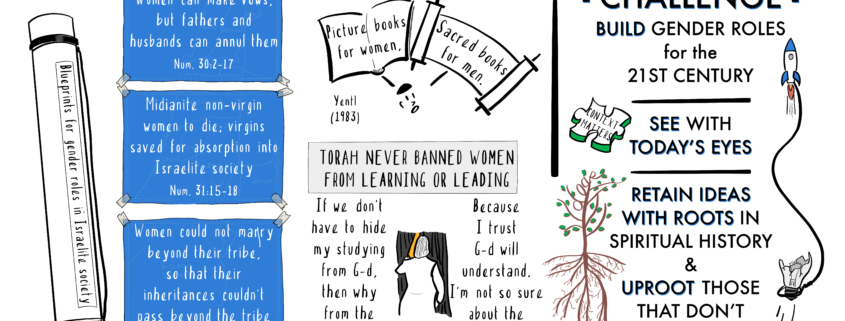
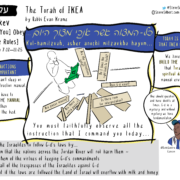
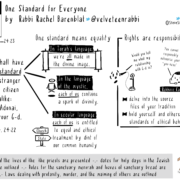
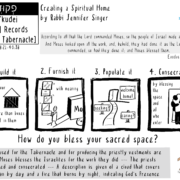
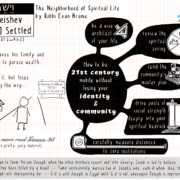

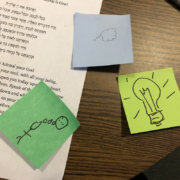


Trackbacks & Pingbacks
[…] Here’s Torah commentary at Builders Blog (a project of Bayit: Building Jewish), this week written by Shoshanna Schechter and sketchnoted as always by Steve Silbert: Building Gender… So The Neighbors Will Understand. […]
Comments are closed.